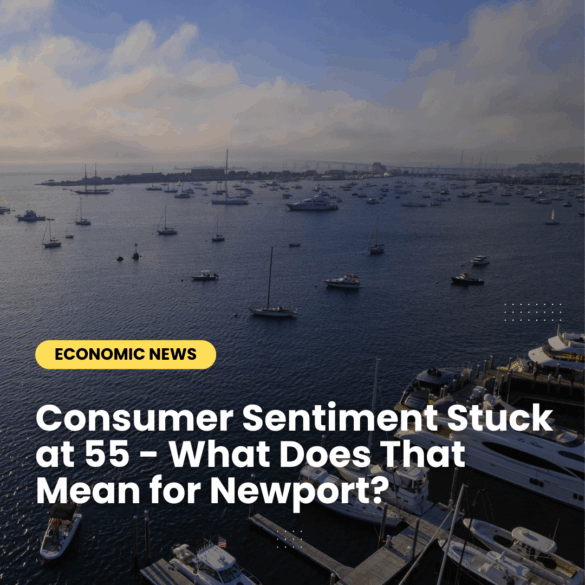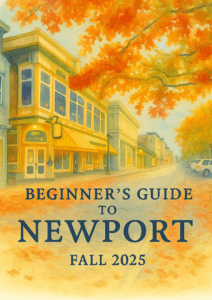As the U.S. economy navigates a foggy outlook, consumer sentiment remains subdued, with the University of Michigan’s preliminary Index holding at 55.0 — a mere 0.2% dip from September’s 55.1 and down about 22% from October 2024’s final 70.5. This flatline, detailed in the preliminary October 2025 Surveys of Consumers release, reflects entrenched worries over high prices, weakening job prospects, and a stagnant economic trajectory. Director Joanne Hsu emphasizes that “pocketbook issues like high prices and weakening job prospects remain at the forefront of consumers’ minds.” Inflation expectations sit at 4.6% for the year ahead and 3.7% on the long run in the preliminary October reading — levels that could factor into Federal Reserve deliberations on future rate moves.
What does all of this mean for Rhode Island and Newport?
For Rhode Island’s $6 billion tourism powerhouse, this subdued mood signals headwinds for Newport’s coastal economy, where visitor spending fuels 88,000 jobs statewide and keeps inns, eateries, and attractions humming amid fall foliage, Atlantic Flyway migrations, and events like today’s Citizens Pell Bridge Run. The question for the City by the Sea: do sentiment blues cool 2025 prospects, or do wealth cushions and regional resilience keep momentum intact?
The sentiment stall is no abstract number — it’s a potential red flag for discretionary spending, the lifeblood of Newport’s tourism-driven economy. With current conditions at 61.0 (roughly +1% m/m) but expectations at 51.2 (about −1% m/m), travelers are prioritizing value over extravagance, even as many households retain a “substantial wealth cushion” that continues to support outlays. In Rhode Island, where visitor volumes reached a record 29.4 million in 2024 and spending rose about 7% to $6 billion in 2024, this caution could temper 2025 gains. Local indicators are mixed, with some access and revenue metrics firm while hotels report pockets of softness. If job worries persist (regional unemployment near 4.1%, Rhode Island at 4.6%), discretionary travel budgets may tighten, especially in the shoulder season, where marquee weekends (like the Pell Bridge Run) fill in quickly but midweek lulls reveal vulnerabilities.
Watching your budget but still want a Newport fix? Base near the wharves for walkable dining, mansion evenings, and easy trolley access. Check Newport hotel availability here.
For Newport’s local economy, the ripple effects are tangible. Tourism supports over 88,000 jobs statewide. Locally, unemployment is around 3.5% in Newport County (not seasonally adjusted, August 2025) versus 4.6% statewide (seasonally adjusted). As consumer expectations soften, value-seeking behavior can pressure pricing: weekends tend to hold firm thanks to foliage demand, while midweek occupancy dips. Nationally, STR’s latest weekly cut (week ending Oct. 11) showed RevPAR up 0.6%, underscoring that the firmness in rates is a national weekly phenomenon — not a Newport-specific data point. Regional coverage has flagged uncertainty earlier in the year, particularly around confidence and tariffs, but outlooks from industry groups still see room for growth despite challenges.
Looking ahead, Newport’s tourism stakeholders should press the value lever. With the 2026 World Cup on the horizon promising sizable regional spillover, today’s softer sentiment argues for drive-and-stay packages (leveraging relatively low gas prices) and easy-arrival messaging via PVD’s #3 small-airport ranking. The Conference Board’s index saw readings below 100 earlier in 2025, a reminder to plan conservatively. Yet, as one market economist put it, consumers haven’t “turned their back on the economy” — they’re just more selective. For Newport, that means doubling down on regional drive markets and budget-forward offers to sustain the $6 billion influx.
What does this mean for your Newport plans or local business? Is sentiment dampening your 2025 outlook? Share your thoughts below!



